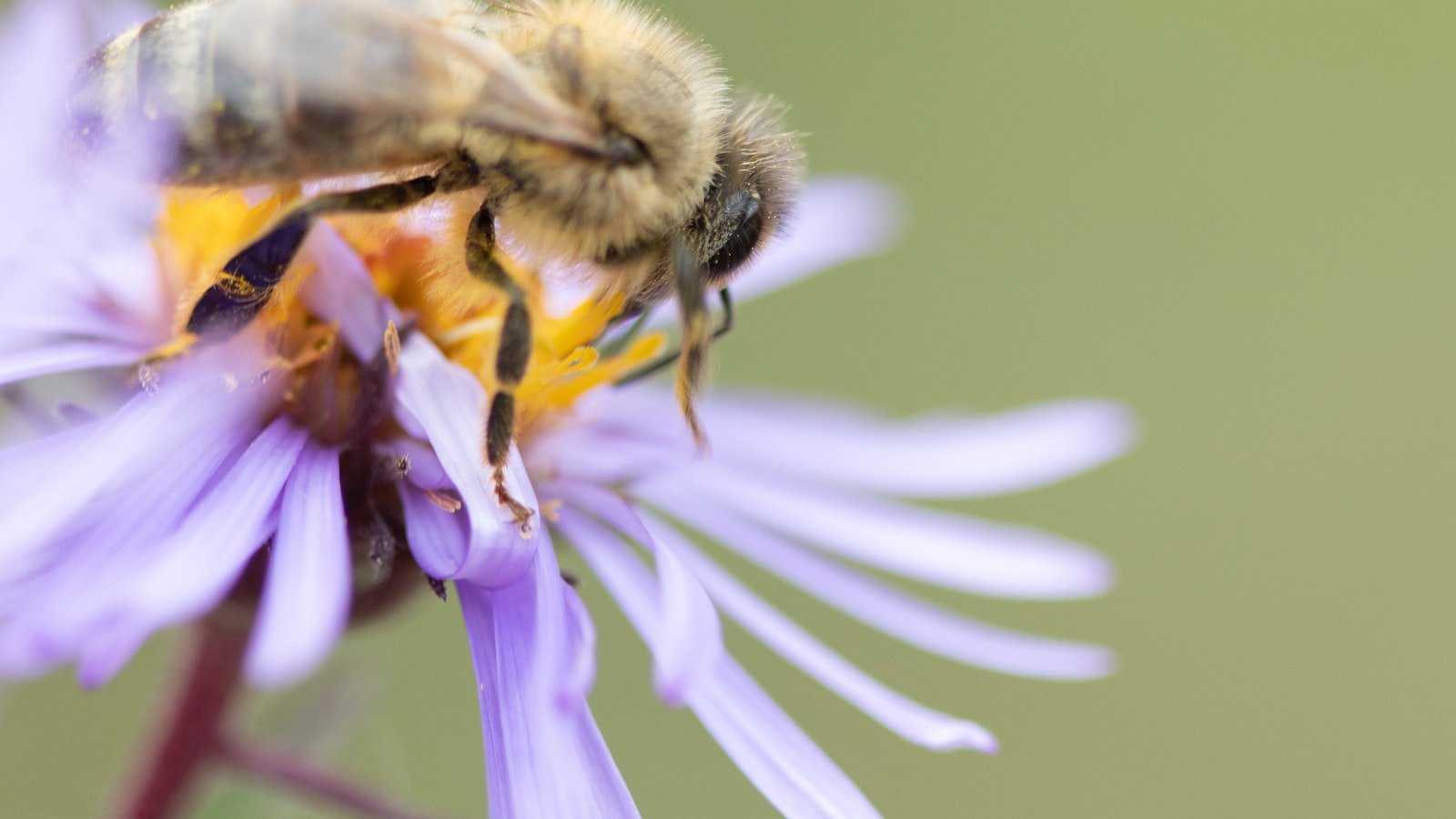Bathed in golden sunshine, a harmonious symphony hums in the air, delicately woven among vibrant blossoms and lush greenery. This melodious sanctuary is no ordinary garden, but a haven crafted with the utmost care for our tiny, yet crucial, winged friends – the bees. In a quest to strike the perfect balance between serenity and ecological responsibility, creating a bee-safe Zen garden emerges as a gentle nod to nature’s incredible rhythms. Through this article, we embark on a journey to unlock the secrets of fashioning a nurturing sanctuary that not only delights our senses but also safeguards the essential ecosystem services bees so selflessly provide. So, let us delve into the fascinating realm of bee-friendly foliage and discover how an enchanting Zen garden can effortlessly coexist with these precious pollinators.
Table of Contents
- Designing a Bee-Friendly Haven
- Harnessing the Power of Native Plants
- Creating a Serene and Relaxing Ambiance
- Providing Essential Water Sources
- Maintaining a Chemical-Free Environment
- Q&A
- Key Takeaways

Designing a Bee-Friendly Haven
Bee populations worldwide are facing significant decline, threatening our food supply and ecosystem health. As responsible stewards of the environment, it is crucial that we take action to create bee-friendly havens in our own backyards. By designing a garden that provides a suitable habitat and abundant forage for bees, we can help support these essential pollinators and contribute to their survival.
Creating a Bee-Friendly Habitat:
- Choose native flowering plants that provide a continuous source of nectar and pollen throughout the year.
- Provide nesting options like bee hotels or small cavities to attract solitary bees, which are also important pollinators.
- Limit the use of pesticides and herbicides that can harm bees and other beneficial insects.
Abundant Forage for Bees:
- Plant a variety of flower shapes, sizes, and colors that appeal to different bee species.
- Include early spring and late fall blooming plants to ensure food availability during periods of scarcity.
- Avoid hybridized or cultivar plants as they may produce less nectar or have confusing flower structures that deter bees.
Provide Water and Shelter:
- Place shallow dishes or a bee-friendly water feature in your garden to provide bees with a source of clean water.
- Create small patches of unmowed grass or add natural debris to create nest sites and shelter for ground-nesting bees.
- Consider planting windbreaks or using trellises to provide protection from strong winds and extreme temperatures.
Remember, designing a bee-friendly habitat not only benefits these incredible pollinators but also adds beauty and vitality to your garden. Let’s all do our part in protecting these crucial insects and promote a sustainable future for our ecosystems.

Harnessing the Power of Native Plants
Nature has provided us with a vast array of native plants that possess incredible power. Harnessing the potential of these plants can bring numerous benefits to our lives and the environment. Native plants have adapted to thrive in specific regions, making them incredibly resilient and low-maintenance options for landscaping and gardening projects.
When it comes to landscaping, native plants offer an opportunity to create sustainable and vibrant ecosystems that support local wildlife. These plants attract pollinators such as butterflies and bees, providing them with essential food sources and habitats. Native plants also help prevent soil erosion, filter pollutants from rainwater, and require less water and fertilizers than non-native species.
Moreover, native plants have immense medicinal value. Many of them contain natural compounds that have been used for centuries in traditional medicine. Some native plants possess anti-inflammatory properties, while others are known for their antibacterial or immune-boosting qualities. Incorporating these plants into our lifestyles can contribute to our health and well-being.
- Native plants reduce the need for chemical pesticides and fertilizers, promoting a healthier environment.
- They provide food and shelter for local wildlife, encouraging biodiversity.
- Native plants improve air and water quality by filtering pollutants and reducing stormwater runoff.
- They require less water, making them more drought-resistant and suitable for sustainable landscaping.
- By planting native species, we preserve our natural heritage and protect regional ecosystems.
Let’s embrace the power of native plants and create a greener, healthier future for ourselves and the planet. Together, we can make a difference.

Creating a Serene and Relaxing Ambiance
Imagine stepping into a sanctuary of tranquility, a space that instantly calms your senses and allows you to escape the worries of everyday life. is the key to achieving this haven of peace within your own home. To transform your space into a soothing retreat, there are a few essential elements to consider.
Firstly, lighting plays a pivotal role in setting the mood. Soft, warm lighting can create a cozy atmosphere and immediately induce a sense of relaxation. Experiment with different types of lighting fixtures, such as dimmers or fairy lights, to achieve the perfect balance. Natural light is another fantastic option, as it not only brightens up your space but also brings a sense of harmony and freshness.
Next, bring nature indoors to infuse your environment with serenity. Beautiful indoor plants not only purify the air but also add a touch of greenery that can instantly recharge your spirit. Whether you prefer large potted plants or a grouping of smaller ones, incorporate these natural elements strategically throughout your space to create a calming oasis.
Another essential component of a serene ambiance is clutter-free surroundings. Clear away any unnecessary items or knick-knacks that may disrupt the sense of peace. Embrace minimalism by opting for clean lines, minimal furniture, and storage solutions that hide away the chaos. Your space will instantly feel more spacious and inviting, allowing for a tranquil state of mind.
- Soothing colors: Choose a color palette that promotes relaxation, such as soft pastels or muted earth tones.
- Natural materials: Incorporate materials like wood, bamboo, or stone for a calming connection to nature.
- Aromatherapy: Introduce the power of scents through essential oils or candles, creating an atmosphere of pure bliss.
By following these tips and infusing your personal taste and style, you can transform any space into a serene and relaxing sanctuary. Allow your home to be a refuge from the stresses of the outside world, where you can truly unwind and find peace.

Providing Essential Water Sources
Access to clean water is a basic human right that should be available to everyone. At our organization, we are dedicated to to communities in need. Through our various initiatives, we strive to bring safe and sustainable water solutions that improve the lives of individuals and communities.
We believe in empowering communities to take charge of their own water supply, which is why our projects focus on long-term sustainability. By implementing innovative technologies and strategies, we ensure that water sources are not only accessible but also reliable.
Our work includes:
- Drilling boreholes and installing wells to tap into underground water sources.
- Distributing water filters and purifiers to households to ensure the quality of water.
- Implementing rainwater harvesting systems to utilize nature’s own water resources.
Furthermore, our organization conducts educational programs to raise awareness about water hygiene and conservation. We firmly believe that is not only about the physical infrastructure but also about empowering communities with knowledge and skills for long-lasting impact.
We are committed to transforming lives and creating a future where access to clean water is a reality for all. Join us in our mission to make a difference, one drop at a time!
Maintaining a Chemical-Free Environment
Tips for Creating and Sustaining a Chemical-Free Environment:
Living in a chemical-free environment is not only beneficial for our health but also for the well-being of our planet. By minimizing our exposure to harmful chemicals, we can contribute to a cleaner and more sustainable world. Here are some practical tips to help you maintain a chemical-free environment:
- Choose natural cleaning products: Opt for eco-friendly and biodegradable cleaning products, which are free from harsh chemicals like ammonia, bleach, and phosphates. Look for labels that indicate non-toxic and environmentally friendly alternatives.
- Eat organic: Consuming organic produce reduces exposure to pesticides and synthetic fertilizers. Support local organic farmers or start your own organic garden, ensuring you have access to fresh, chemical-free fruits, vegetables, and herbs.
- Avoid synthetic fragrances: Synthetic fragrances found in air fresheners, perfumes, and household products often contain harmful chemicals. Consider using natural alternatives like essential oils or simply open windows to let in fresh air.
- Use natural pest control methods: Instead of relying on chemical pesticides, implement natural pest control methods such as using ladybugs to control aphids, diatomaceous earth for crawling insects, or peppermint oil for ants.
- Reduce plastic use: Plastics contain various chemicals that can leach into our environment and affect our health. Choose reusable alternatives like glass or stainless steel containers to store food and beverages, and avoid single-use plastic items whenever possible.
- Opt for natural personal care products: Many conventional personal care products contain harmful chemicals like parabens and sulfates. Switch to natural alternatives or consider making your own using simple ingredients like coconut oil, essential oils, and baking soda.
By following these practices, we can take small steps towards , promoting a healthier future for both ourselves and the planet.
Q&A
What are the key elements to consider for creating a bee-safe zen garden?
To create a bee-safe zen garden, it is important to include native plants that attract bees and offer them nectar and pollen. Additionally, avoiding the use of pesticides and providing a water source for bees to drink from are essential elements to consider.
Which native plants are ideal for attracting bees in a zen garden?
Native plants like lavender, sunflowers, goldenrod, and coneflowers are excellent choices for attracting bees to a zen garden. These plants offer ample nectar and pollen, which are vital food sources for bees.
How can I ensure my zen garden is pesticide-free?
To make your zen garden pesticide-free, opt for organic gardening practices. Avoid using chemical pesticides or herbicides and instead focus on natural methods of pest management, such as companion planting or introducing beneficial insects that control pests.
What are some suitable water sources for bees in a zen garden?
Incorporating shallow dishes or bowls filled with water and pebbles can serve as safe and accessible water sources for bees. Ensure that the water source is not too deep to prevent bees from drowning, and keep it clean and refreshed regularly.
Are there any specific design elements to consider for a bee-safe zen garden?
Incorporate diverse plantings in your zen garden, creating clusters or patches of the same plant species to attract more bees. Creating a variety of heights and textures with plants, while also providing sheltered areas like rocks or shrubs, will enhance the overall appeal of the garden for both bees and humans.
Should I be concerned about bees stinging me while in my zen garden?
While bees are generally docile creatures, it is always important to respect their space and avoid disturbing their nests. By creating a bee-friendly environment, you will be providing them with ample food sources, reducing the chances of them becoming defensive and stinging.
What are the benefits of having bees in a zen garden?
Bees play a crucial role in pollination, aiding in the reproduction of many plants. By attracting bees to your zen garden, you will increase biodiversity, support local ecosystems, and contribute to a healthy environment. Additionally, observing the magical dance of bees can enhance the serenity and tranquility of your garden.
Key Takeaways
As we gently stroll out of the realm of flower petals and buzzing wings, we bid farewell to the realm of the Zen garden, breathing in the tranquility that lingers in the air. The journey to create a bee-safe sanctuary has been one of harmony, where nature’s dance is preserved and celebrated. By embracing the wisdom of centuries-old traditions, we have woven together the delicate threads that bind serenity and sustainability.
In this harmonious haven, the whispers of wind rustle through leaves, creating a gentle symphony of peace. The gentle hum of bees, once an anxious reminder of these mighty pollinators, now harmonizes effortlessly with the soothing melodies of nature. We have harnessed the power of intention, nurturing the very essence of life itself – from the delicate petals that whisper tales of colors, to the buzz of humble workers in their eternal quest to nurture the Earth.
Our hands, once wielders of pesticides and harsh chemicals, have become vessels of tenderness, caressing the garden’s soil with compassion and respect. We have listened to the wisdom of the ecosystem, nurturing biodiversity and embracing Mother Nature’s dance of interdependence. The Zen garden has taught us that imitating nature’s grace is the key to unlocking its secrets – secrets that inspire us to become guardians of the delicate harmony that resides within our own backyard sanctuaries.
And as we complete our journey, we emerge with a renewed understanding of the delicate balance that connects all beings. The bee-safe Zen garden is more than just a testament to our reverence for nature – it is a tapestry of unity, where humans and bees coexist in perfect harmony. Its ethereal beauty stretches beyond the boundaries of flowers and greenery, reaching into the depths of our very souls.
So, let us embark on this journey hand in hand with the bees, for they are our humble partners in this timeless tale. By creating a haven where their buzzy symphony can thrive unhindered, we safeguard the future of our planet and embark on a path of enlightenment. In the gentle embrace of our bee-safe Zen gardens, we find solace, inspiration, and a reflection of the interconnectedness that defines our world.
May these precious sanctuaries become beacons of hope, inspiring others to join us in creating a harmonious haven for the enchanting creatures that sustain life. As we part ways, remember that the smallest of actions can echo throughout eternity. So, let us shed the armor of indifference, embrace the legacy of the Zen garden, and embark on a journey towards a world where bees and humans weave a tale of everlasting unity.
As an affiliate, my content may feature links to products I personally use and recommend. By taking action, like subscribing or making a purchase, you’ll be supporting my work and fueling my taco cravings at the same time. Win-win, right?
Want to read more? Check out our Affiliate Disclosure page.